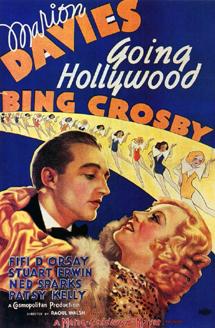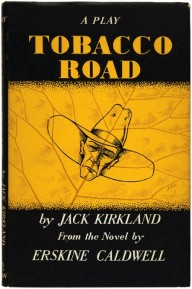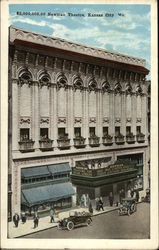 |
| Blue Moon - December 31, 1933 The term Blue Moon usually refers to the second full moon in any given month. It's a rare event. Since 1900, this has only happened five times...on New Year's Eve 1933, 1952, 1971, 1990, and 2009. The next time we'll see a Blue Moon on New Year's Eve will be in 2028. Happy New Year! May 2012 be your best year ever! |
The daily diary entries from Ruth Catherine McKenzie McCoy. Her daughter, author Fran Baker, has included photos, historic notes and "old-time" recipes following the entries. Readers are welcome to comment.
Saturday, December 31, 2011
Sunday, December 31, 1933
I got a bad cold so we didn't go to church. Uncle Laten was by. We all went over to Raiferts' as it was New Year's.
Friday, December 30, 2011
Saturday, December 30, 1933
I got some things down at the new grocery store. Went over to Gweyn's. Went to Lindsays' with Mrs. Raifert.
Thursday, December 29, 2011
Friday, December 29, 1933
I cleaned up the house. Baked a marble cake. Mother made doughnuts. I played with Betty.
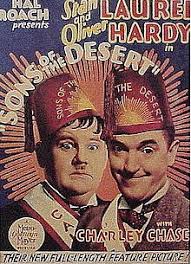 |
| Sons of the Desert Starring Stan Laurel and Oliver Hardy Directed by William A. Seiter Released on December 29, 1933 Sons of the Desert is regarded as one of Laurel and Hardy's greatest films. In the United Kingdom the film was originally released under the title Fraternally Yours. Plot Summary: Lodge members Laurel and Hardy take a solemn oath to attend the 80th-annual Sons of the Desert Convention (read: annual binge) in Chicago. That is, Ollie takes the oath, but Stanley balks. When asked why, Stanley answers that he's afraid his wife won't let him go. Ollie is appalled: "Every man must be king in his own castle." But when Ollie meekly brings up the subject of the convention with his wife Lollie (Mae Busch), she soon dethrones the "king." Lollie wants to take a vacation in the mountains, and is dead-set against her husband going around "with a pack of hooligans." But Ollie is determined to attend the convention, and to that end cooks up a scheme with Stanley. Ollie will pretend to be deathly ill; Stan will fix it so the doctor will prescribe a trip to Honolulu. Knowing that his wife can't stand going on sea voyages, Ollie will request that Stan accompany him to Hawaii--then, both men will sneak off to Chicago. A few hitches notwithstanding (Stan hires a veterinarian instead of a doctor, explaining that he didn't think the man's religion would make any difference), the boys go to the convention, where they cut up royally with practical joker Charley Chase. Alas, the Honolulu-bound boat on which Stan and Ollie are supposed to be travelling is sunk in a typhoon. While the grief-stricken wives are at the steamship company attempting to find out if their husbands survived the sea disaster, Stan and Ollie arrive home, wearing leis and carrying pineapples as "evidence" of their Honolulu vacation. When the boys find out about the shipwreck, they desperately try to escape to a hotel, but the wives arrive home prematurely, forcing Stan and Ollie to camp out in the attic. It looks as though the boys might just get away with their new plan of coming home at the same time that the rescue boats arrive....until Lollie Hardy and Betty Laurel (Dorothy Christie), attending a picture show, are treated to the spectacle of their husbands cavorting merrily before the newsreel cameras covering the Sons of the Desert conclave in Chicago. The film's final ten minutes are priceless--especially the bit about "ship-hiking." |
Wednesday, December 28, 2011
Thursday, December 28, 1933
Mother and I went downtown. I had my hair set. We got some kettles. Mrs. Raifert came over. Played pinochle.
 |
| Jacob L. Loose Founder of Loose-Wiles Biscuit Jacob Loose was a young Pennsylvania transplant to Chetopa, Kansas. He opened his first dry goods store there in the 1870s. Twenty-five years later, he was baking mogul of Kansas City's enormous Loose-Wiles Biscuit Company Loose to live well. And they gave generously. The Loose's philanthropy is legendary. Jacob's name evokes lovely Loose Park gave the 80-acre green space to the city in 1923 in her husband's memory. Ella Loose herself was famous for her 30-year tradition of Thanksgiving "shoe parties." Until the 1940s, Mrs. Loose gave an annual party for the children at the Gillis Orphans' Home. Each child received a brand new pair of shoes plus a dollar bill for spending money! The Loose's splendid 1909 mansion Boulevard. Jacob Loose died at age 73 on September 18, 1923. Ella Loose outlived him almost a quarter of a century, expiring on September 26, 1945. Their charitable trusts, combined with those of his brother Joseph and family, ultimately formed the basis for Kansas City's largest charitable organization, Greater Kansas City Community Foundation and Affiliated Trusts. |
Tuesday, December 27, 2011
Wednesday, December 27, 1933
Mother washed, then I did the ironing. I went over to Sweyn's. Popped corn at home. Got 2 magazines.
Monday, December 26, 2011
Tuesday, December 26, 1933
Don't have to go to school this week. I straightened up the house. Daddy and I played dominoes. He beat.
 |
| Current Nissan Logo December 26, 1933 - Nissan Motor Company is organized in Tokyo, Japan |
The name 'Nissan' originated during the 1930s as an abbreviation used on the Tokyo stock market for Nippon Sangyo. This company was the famous Nissan "Zaibatsu" (combine) which included Tobata Casting and Hitachi. In 1930 Nissan purchased controlling shares in DAT Motors. At this time Nissan controlled foundries and auto parts businesses, but did not enter automobile manufacturing until 1933, when it merged Tobata Casting's automobile parts department with DAT Motors. In 1934, Nissan separated the expanded automobile parts division of Tobata Casting and incorporated it as a new subsidiary, which was named Nissan Motor Co., Ltd. |
Sunday, December 25, 2011
Monday, December 25, 1933
Mother and Daddy came over for dinner. Had chicken, gravy, dressing, cranberries, slaw, cake, pie, candy, etc. I got a box of stationery, a pen, beads. Didn't stay with Mrs. Raifert.
 |
| 1933 Christmas Seal MERRY CHRISTMAS! |
Saturday, December 24, 2011
Sunday, December 24, 1933
Mother and I went to church and Sunday School. Had a tree. I went out to Aunt Katie's and stayed all night. Went to the show. Saw the new Bing Crosby movie.
Friday, December 23, 2011
Saturday, December 23, 1933
Mother and I went to town. Went to the show. I got a few of my Christmas gifts. Stayed at Mrs. Raifert's.
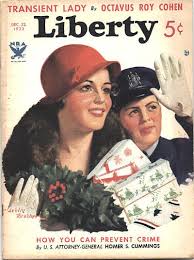 |
| Liberty [v10 #51, December 23, 1933] ed. Bernarr Macfadden (Liberty Publishing Corporation, 5¢, 55pp, standard, cover by Leslie Thrasher) Canadian Magazine Contents |
Thursday, December 22, 2011
Friday, December 22, 1933
Rode to school on the pass. Had play at school. Went swimming. I got out at 2 o'clock today. Stayed at Mrs. Raifert's.
Wednesday, December 21, 2011
Thursday, December 21, 1933
I walked to school with Nadine and Pauline. Fred got burned and was taken to the hospital. I stayed at Mrs. Raifert's.
Tuesday, December 20, 2011
Wednesday, December 20, 1933
I rode the streetcar to school with Pauline. In the evening she and Nadine and I went up to the school program. I stayed at Mrs. Raifert's.
 |
| New York Times - December 20, 1933 "Yes, Virginia, there is a Santa Claus" - Francis P. Church, The Sun, September 21, 1897 Virginia O'Hanlon's full name was Virginia O'Hanlon Douglas. She was born on July 20, 1889 in Manhattan, New York. Her marriage to Edward Douglas in the 1910s was brief, and ended with his deserting her shortly before their child, Laura, was born. Virginia was listed as divorced in the 1930 United States Census. Virginia received her Bachelor of Arts from Hunter College in 1910; a Master's degree in Education from Columbia University in 1912, and a doctorate from Fordham University. Virginia was a school teacher in the New York City School system. She started her career as an educator in 1912, became a junior principal in 1935, and retired in 1959. Virginia O’Hanlon received a steady stream of mail about her letter throughout her life. She would include a copy of the editorial in her replies. In an interview later in life, she credited the editorial with shaping the direction of her life quite positively. Virginia died on May 13, 1971 in a nursing home in Valatie, New York. She was buried at the Chatham Rural Cemetery in Chatham, New York. |
Monday, December 19, 2011
Tuesday, December 19, 1933
I rode the streetcar to school. I got all M's. Rode streetcar home. Hattie stayed with Mrs. Raifert.
Sunday, December 18, 2011
Monday, December 18, 1933
I rode to school with Nadine. Tomorrow is grade cards. Walked home with Ruth. Stayed with Mrs. Raifert.
Saturday, December 17, 2011
Sunday, December 17, 1933
Mother and I went to church. Mother rode the streetcar downtown. Pauline and I went to church. Stayed all night at Mrs. Raifert's.
 |
| The Chicago Bears defeat the New York Giants 23-21 in the first National Football League championship game. The NFL's first-ever championship game in 1933 featured its fair share of wild plays. Included among them was the game-winning touchdown by the Bears. In a designed trick play, Bronko Nagurski faked the run, threw a jump pass 14 yards to the helmet-less Bill Hewitt, who in turn lateraled to Bill Karr who ran 19 yards to the end zone. |
Friday, December 16, 2011
Saturday, December 16, 1933
Daddy got a streetcar pass. Mother and I went to town. Got Christmas presents. Met Aunt Katie's and rode home with them. All night with Mrs. Raifert.
| Troost Avenue Streetcar - 1933 Quite likely one of the streetcars Ruth rode to school and to town |
Thursday, December 15, 2011
Friday, December 15, 1933
Rode with Nadine this a.m. Daddy got a job. I went to dentist. Had tooth put in. Stayed with Mrs. Raifert.
Wednesday, December 14, 2011
Thursday, December 14, 1933
Rode to school with Nadine. We had test in English. Tomorrow night I am going to the dentist. I stayed at Mrs. Raifert's.
Tuesday, December 13, 2011
Wednesday, December 13, 1933
Rode to school with Nadine. I went swimming. Friday we are going to have a Gym test. Ate at Dick's. Clara stayed with Mrs. Raifert.
| 1521 E. 18th Street (18th and Vine), Kansas City, Missouri Note the prices: Not very hungry 15 cents Hungry 20 cents Very Hungry 25 cents |
Monday, December 12, 2011
Tuesday, December 12, 1933
Rode with Nadine. We went down to the library in English. Went to the dentist. Hattie stayed with Mrs. Raifert.
Sunday, December 11, 2011
Monday, December 11, 1933
Rode to school with Nadine. Had a test in Latin and one in English. Daddy came after us. Stayed all night at Mrs. Raifert's.
 |
| Special Agent Charles Appel - December 1933 Harrington Fitzgerald, Jr., a mental patient in a Pennsylvania veterans’ hospital more than one hundred miles away from his nearest relatives, opened and quickly sampled the box of chocolates from “Bertha.” Perhaps he thought the November 1933 delivery was an early Christmas present; if so, it was the last one he received. Fitzgerald died soon after eating the first poisoned treat. As the crime occurred on federal property, agents of the U.S. Bureau of Investigation [the FBI’s predecessor] investigated. Mr. Fitgerald’s sister, Sarah Hobart, quickly became the primary suspect and so agents solicited samples of her handwriting. These samples along with the package’s wrapper and card were sent to Headquarters for analysis in the Bureau’s new Technical Laboratory. There, Special Agent Charles Appel, a balding, meticulous investigator, received the evidence and began to compare the handwriting samples to the note card. He reported that the note from “Bertha” and the Hobart samples revealed no match. More analysis could be done, he suggested, if the investigating agents would obtain samples from Hobart’s husband and track down the family’s typewriter. Diligent detective work led Philadelphia agents to a typewriter Mrs. Hobart had conveniently sent in for repair at a local shop. Using samples of type from the Hobart machine, Appel quickly determined that it was the machine on which the mailing label on package of poisoned candy was typed. Confronted with the evidence, Sarah Hobart confessed. At the time Special Agent Appel solved this case, he was the Bureau’s only scientist even though its Technical Crime Laboratory had been in operation for little more than a year. But by the summer of 1934 Appel had two additional colleagues in the lab, and the FBI began expanding its laboratory with the tools and capabilities necessary for solving federal crimes. |
Saturday, December 10, 2011
Sunday, December 10, 1933
Mother and I went to church and Sunday School. In p.m. walked over to show. Saw 20,000 Years in Sing Sing. Went over to Mrs. Raifert's. Stayed all night.
Friday, December 9, 2011
Saturday, December 9, 1933
Was going to town but Daddy got a carpentry job* so didn't go. Nadine and Ruth and I went up to Perky's. Played with Betty. Stayed at Mrs. Raifert's.
*Average annual construction worker's salary in 1933: $907.
*Average annual construction worker's salary in 1933: $907.
Thursday, December 8, 2011
Friday, December 8, 1933
Rode to school with Nadine. Mother made my brown dress and I wore it to school today. Stayed at Mrs. Raifert's.
 |
| Nelson-Atkins Museum of Art Kansas City, Missouri When the massive Beaux Art Nelson-Atkins’ Building opened in 1933, newspapers nationwide reported visitors “amazed,” “gasping at its innovations and marveling at its luxury.” A great central hall over 40 feet tall with ceiling skylights formed the heart of the interior and was flanked on either side by two-story gallery wings. The east wing bore the name of the Atkins Museum of Fine Arts, and the remainder of the building was officially titled the William Rockhill Nelson Gallery of Art. Still, times being the Great Depression, operations were modest: only three telephones serviced the entire building; lights in the galleries were turned off when people left a room; at opening and closing times, a huge bell was rung manually. |
Wednesday, December 7, 2011
Thursday, December 7, 1933
We rode to school again with Nadine. Stayed for basketball. Daddy and Joyce and Baby Doll and I went over to Mrs. Smith's. Stayed with Mrs. Raifert.
Tuesday, December 6, 2011
Wednesday, December 6, 1933
Nadine and Ruth and Pauline and I rode to school. Nadien's father took us. We are having dictionary tests in English. Stayed with Mrs. Raifert.
Monday, December 5, 2011
Tuesday, December 5, 1933
Pauline and I walked to school together this a.m. Mother and I went to the show. Saw "Sailor Be Good" and "Melody Cruise." Hattie stayed with Mrs. Raifert.
Sunday, December 4, 2011
Monday, December 4, 1933
I walked to school this a.m. as Ruth and them didn't come by in time. Had a test. Stayed over at Mrs. Raifert's.
Saturday, December 3, 2011
Sunday, December 3, 1933
Went to Sunday school but not church. I read the paper. Ollie came over and they played pinochle. I stayed all night at Mrs. Raifert's.
Friday, December 2, 2011
Saturday, December 2, 1933
Went downtown today. I got a new hat and scarf set and a permanent. Got Christmas cards. Stayed the night with Mrs. Raifert.
Thursday, December 1, 2011
Friday, December 1, 1933
Today was the parade downtown but I didn't go. Walked with Mrs. Raifert down to Mary's sister's. Boiled halibut and stewed tomatoes for supper. Stayed all night with Mrs. R again.
Wednesday, November 30, 2011
November 30, 1933
I straightened up the house today. Helen, Kate and Laten came over for Thanksgiving dinner. Had our goose Ruby sent, gravy, Irish potatoes, candied sweet potatoes, string beans, cake Jell-O, etc. Exchanged magazines with Helen. I stayed with Mrs. Raifert.
 |
| Charlie Chaplin April 16, 1889 - December 25, 1977 Born as: Charles Spencer Chaplin Charlie was born in London, the son of poverty-stricken music-hall entertainers. At five he took his first turn on the stage; at age 17 he joined a music hall troupe with whom he honed his pantomimic skills. On tour in New York (1913), he caught the eye of Mack Sennett, who signed him to a film contract. His first movie, Making a Living (1914), premiered in February. He made 35 films that year meanwhile developing his character of The Little Tramp, baggy pants, derby hat, oversized shoes, and cane. The final touches were applied in The Tramp (1915) which made him an instant star. In 1919 Chaplin teamed up with Douglas Fairbanks , Mary Pickford and D.W. Griffith to form United Artists, for production of their own films. In the following years Charles produced, directed, and starred in such classics as The Gold Rush (1925), City Lights (1931), Modern Times (1936) and The Great Dictator (1940). Over the years he was criticized for his many romantic affairs and for his political leftist views. When Charles went to London in 1952 with his fourth wife Oona, he was informed that he wasn't allowed to return to America. They moved to Switzerland. During his absence from the States he made two more films, A King in New York (1957), and his final film A Countess from Hong Kong (1967), which starred Marlon Brando and Sophia Loren Chaplin did not return to the USA until 1972, when he accepted a Special Academy Award. |
Tuesday, November 29, 2011
Wednesday, November 29, 1933
Daddy took us to school. I went swimming. Had assembly. History test. Stayed at Mrs. Raifert's.
Monday, November 28, 2011
Tuesday, November 28, 1933
Daddy took us to school. I waited for Nadine tonight but she had to stay after school. Hattie stayed all night at Mrs. Raifert's.
| Hilda E. Gass - First female deputy in St. Clair County, Illinois From the Belleville, IL, Daily Advocate: On November 28, 1933, Miss Hilda E. Gass was named a special deputy sheriff for economical as well as practical reasons. When women prisoners are taken to the penitentiary the law provides that a matron must accompany the guards. Heretofore special matrons were named for each trip to the penitentiary, but in the future Miss Gass will be the matron as well as a guard. In addition Miss Gass will be able to relieve the male deputies in the sheriff’s office by serving official papers when they are engaged in the solution of a baffling case. She will also be of aid as a detective in cases in which women can gain greater confidence than men. |
Sunday, November 27, 2011
Monday, November 27, 1933
Daddy took me and the girls to school. Tomorrow we are to have a History test on Rome. I stayed all night at Mrs. Raifert's.
.
 Billie Holiday (AKA "Lady Day) April 7, 1915 - July 17, 1959 Born: Eleanora Fagan Gough |
| On November 27, 1933, 18-year-old Billie Holiday recorded her first session, singing "Your Mother's Son in Law" with Benny Goodman. She got paid $35; no royalties. The record flopped, but her singing career was on its way. |
.
Saturday, November 26, 2011
Sunday, November 26, 1933
Went to Sunday school this morning. Saw "Footlight Parade" with Pauline. Daddy got me a white rat. Mrs. Raifert was over. I stayed all night.
 |
| Footlight Parade is a 1933 American musical film starring James Cagney, Joan Blondell, Ruby Keeler and Dick Powell, and featuring Frank McHugh, Guy Kibbee, Hugh Herbert and Ruth Donnelly. The movie was written by Manuel Seff and James Seymour from a story by Robert Lord and Peter Milne, and was directed by Lloyd Bacon. The spectacular Busby Berkeley musical numbers, written by Harry Warren (music) and Al Dubin (lyrics) and Sammy Fain (music) and Irving Kahal (lyrics), include "By a Waterfall", "Honeymoon Hotel", and "Shanghai Lil". In 1992, Footlight Parade was selected for preservation in the United States National Film Registry by the Library of Congress as being "culturally, historically, or aesthetically significant". |
Friday, November 25, 2011
Saturday, November 25, 1933
Ate breakfast at Mrs. Raifert's. Walked over to Carlins' with her. Ollie was over. Had chicken for dinner.
 |
| Joyce Clyde Hall (August 29, 1891 – October 29, 1982) Founder of Hallmark Cards In 1910, Hall moved from Nebraska to Kansas City, Missouri, with little more than two shoe boxes of postcards. By 1913, he and his brothers were operating a store (which would eventually evolve into Kansas City's Hall's department store) selling not only postcards but also greeting cards. The store burned in 1915, and a year later, Hall bought an engraving business and began printing his own cards, which he marketed under the Hallmark brand name. Hallmark's corporate headquarters remain in Kansas City. |
Thursday, November 24, 2011
Friday, November 24, 1933
Daddy took us girls to school. I went swimming today. Went to dentist in the evening, then played pinochle. I stayed all night with Mrs. Raifert.
 |
| Where are the jobs? By November 1933, unemployment in America had skyrocketed to over 23% and the Dow plummeted to 90, a loss of nearly 75 percent of its previous value. In this photo, unemployed men queued outside a Depression-era soup kitchen opened in Chicago by Al Capone in an effort to clean up his public image. The storefront sign reads: "Free Soup, Coffee and Doughnuts for the Unemployed." |
Wednesday, November 23, 2011
Thursday, November 23, 1933
Daddy took us to school. It snowed a little today. Mrs. Raifert came over. I stayed all night with her.
 |
| View From My Studio - Kansas City, 1933 (c) Fred Shane A native of Kansas City, Missouri, Fred Shane (Frederick Emanuel) studied at the Kansas City Art Institute in 1923-24. He was with Randall Davey and John Sloan in Sante Fe in 1924; studied at the Broadmoor Art Academy, Colorado Springs, 1925-26; and worked in New York, 1926-27, where he met Robert Henri. In 1928 he visited North Africa, Spain, and France. In 1932 Shane began teaching at the University of Missouri at Columbia; he was appointed Art Department Chairman in 1958, and he retired in 1971. He was on the Public Works of Art Project when he meet and developed a life-long friendship with Thomas Hart Benton in 1935. Shane showed a painting at the New York World's Fair, 1939, and in 1940/41 made the mural Picnic, Lake of the Ozarks, for the Post Office of Eldon, Missouri, a commission from the US Treasury. From 1939 to 1944, Shane summered in Colorado, and in 1945 through 1949 in California. In 1944 he was an artist-correspondent for the US Army Medical Corps. An archive of work by Fred Shane is in the State Historical Society of Missouri. Additional permanent collections with work by Shane are the Cantor Arts Center, Stanford University; the Los Angeles County Museum of Art; the St. Louis Art Museum; the Abbott Collection of Paintings of Army Medicine and the Smithsonian American Art Museum, Washington, DC; the Metropolitan Museum of Art, New York; Wolfsonian Foundation, Miami Beach; and the Walters Art Gallery, Baltimore. |
Tuesday, November 22, 2011
Wednesday, November 22, 1933
I went swimming today. Daddy took us to school. Walked home with Ruth Ray and Nadine. Clara stayed at Mrs. Raifert's.
 |
| On November 22, 1933, a trap was set by the Dallas, Texas, sheriff and his deputies in an attempt to capture Bonnie and Clyde near Grand Prairie, Texas, but the couple escaped the officers' gunfire. They held up an attorney on the highway and took his car, which they abandoned at Miami, Oklahoma. |
Monday, November 21, 2011
Tuesday, November 21, 1933
I walked to school with Ruth Ray. It is turning colder now. Stayed all night at Mrs. Raifert's.
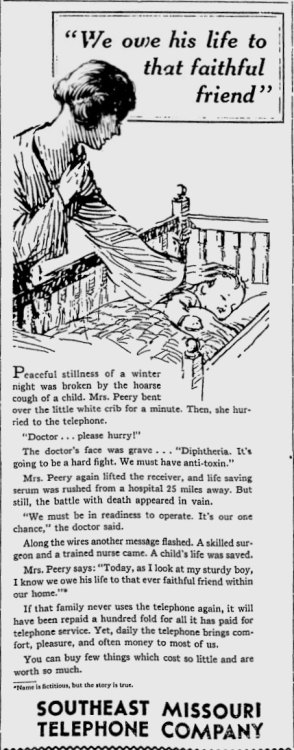 |
| Ad from The Southest Missourian - November 21, 1933 Questionable Advice? “…daily the telephone brings comfort, pleasure, and often money to most of us.” Sounds like the "cell phone wars" of today, huh? |
Sunday, November 20, 2011
Monday, November 20, 1933
Daddy took us girls to school. I went to dentist in evening. Had tooth filled. Mrs. Raifert came over. I stayed all night with her.
| Baffin Bay Earthquake - November 20, 1933 The 1933 Baffin Bay earthquake was a 7.3 magnitude earthquake that struck Greenland and Nunavut, and Canada at 6:21 p.m. ET on Sunday, November 20, 1933. The main shock epicenter was located in Baffin Bay on the east coast of Baffin Island. The shaking associated with this earthquake was only felt at the small town of Upernavik, Greenland. The 1933 Baffin Bay earthquake is the largest recorded earthquake to strike the passive margin of North America and is the largest known earthquake north of the Arctic Circle. No damage was reported during this earthquake because of its offshore location and the small population of the nearby onshore communities. |
Saturday, November 19, 2011
Sunday, November 19, 1933
Went to Sunday School. Mother and Daddy and I took Ollie out to Frankie's. In the evening Mother and I went to church with Betsy.
 |
| Rose Joan Blondell (August 30, 1906 – December 25, 1979) was an American actress who performed in more than one hundred movies and television productions for five decades as Joan Blondell. Joan's cradle was a property trunk as her vaudevillian parents moved from place to place; she made her first appearance on stage at the age of four months when she was carried on in a cradle as the daughter of Peggy Astaire in The Greatest Love. During the Great Depression, Blondell was one of the highest paid individuals in the United States. Her stirring rendition of "Remember My Forgotten Man" in the Busby Berkeley production of Gold Diggers of 1933, in which she co-starred with Dick Powell and Ruby Keeler, became an anthem for the frustrations of the unemployed and the government's failed economic policies. Joan Blondell died of leukemia in Santa Monica, CA, on Christmas Day 1979 with her children and her sister at her bedside. She is interred in the Forrest Lawn Memorial Park Cemetery in Glendale, CA. |
Friday, November 18, 2011
Saturday, November 18, 1933
Mother and Daddy and I went to Sears Roebucks and downtown. Mother and I got dresses. Went down to Mrs. Holbrook's on 16th. Ruth and Nadine were over.
 |
| November 18, 1933 appearance by Tom Mix and his Wonder Horse Tony Thomas Edwin "Tom" Mix (born Thomas Hezikiah Mix (January 6, 1880 – October 12, 1940) was an American film actor and the star of many early Western movies. He made a reported 336 films between 1910 and 1935, all but nine of which were silent features. He was Hollywood’s first Western megastar and is noted as having helped define the genre for all cowboy actors who followed. Mix's intelligent and handsome horse Tony also became a celebrity. Tom Mix has a star on the Hollywood Walk of Fame at 1708 Vine Street. His cowboy boot prints, palm prints and his famous horse Tony's hoof prints are at Grauman's Chinese Theatre at 6925 Hollywood Boulevard. In 1958 he was inducted posthumously into the Western Performers Hall of Fame at the National Cowboy & Western Heritage Msueum in Oklahoma City, Oklahoma. |
Thursday, November 17, 2011
Friday, November 17, 1933
We didn't get to ride this morning. I went swimming. I bought my lunch. Stayed at Mrs. Raifert's all night.
 |
| Duck Soup First released theatrically by Paramount Pictures on November 17, 1933 Duck Soup is a 1933 Marx Brothers anarchic comedy film written by Bert Kalmar and Harry Ruby, with additional dialogue by Arthur Sheekman and Nat Perrin, and directed by Leo McCarey. It starred what were then billed as the "Four Marx Brothers" (Groucho, Harpo, Chico, and Zeppo) and also featured Margaret Dumont, Raquel Torres, Louis Calhern and Edgar Kennedy. Duck Soup was the last Marx Brothers film to feature Zeppo, and the last of five Marx Brothers movies released by Paramount. |
Wednesday, November 16, 2011
Thursday, November 16, 1933
Daddy took all of us girls and Lucille to school. He put a sign asking for carpentry work on the porch rail. I stayed all night at Mrs. Raifert's.
 |
| November 16, 1933 - The U.S. officially recognizes the U.S.S.R. From the New York Times: The undertakings of the two governments were set forth in eleven letters and a memorandum exchanged between the President and Maxim Litvinoff, Soviet Commissar for Foreign Affairs, covering agreements and concessions completed in ten days of negotiation. Subject to the approval of the Soviet Government, William C. Bullitt of Philadelphia, special assistant to the Secretary of State, was designated to be the first American Ambassador to the U. S. S. R. The pact, read to the press by President Roosevelt at his press conference this afternoon, covers propaganda, freedom of worship, protection of nationals and debts and claims. |
Tuesday, November 15, 2011
Wednesday, November 15, 1933
Mother and Mrs. N. walked to 23rd Street. I ate my lunch in the other lunch room today. Went swimming. Stayed at Mrs. Raifert's.
 |
| Mickey Rooney Born: Joseph Yule, Jr., September 23, 1920, in Brooklyn, New York Rooney first appeared on stage at the age of 17 months during one of his of his parents' vaudeville routines. His father, a heavy drinker and womanizer, was from Scotland, and his mother, Nell, was from Kansas City, MO. Fed up with her husband's boozing and philandering, Nell moved with her only son back to Kansas City, MO. She then moved with him to Hollywood, CA, and, while reading the entertainment papers, she learned about a part for a dark-haired boy to play "Mickey McGuire" in a series of short films. Lacking the money to dye her son's hair, she applied burnt cork to his scalp for the audition. Joe, Jr. got the role and became "Mickey" for 78 of the comedies that he appeared in. His mother later decided to change his name (and and hers) and Joseph Yule, Jr. became Mickey Rooney. After finishing the comedy series, Rooney signed with MGM in 1934. He played several other roles before MGM cast him as the teenage son of a judge in the first Andy Hardy film, 1937's "A Family Affair," setting Rooney on the way to another successful film series and a wildly successful film and telelvision career. Mickey Rooney has had one of the longest careers of any actor, to date spanning almost 90 years actively making films in ten decades from the 1920's to 2010's. He lives in California with his eighth wife and is the last surviving male star from 1930s Hollywood. |
Monday, November 14, 2011
Tuesday, November 14, 1933
Walked with Pauline, Bernice, Virginia, Ruth and Nadine to school. I stayed all night over at Mrs. Raifert's.
 |
| Pete Johnson (March 25, 1904 – March 23, 1967) American boogie-woogie and jazz pianist Born in Kansas City, Missouri, Johnson has been called "one of the three great boogie-woogie pianists (along with Meade Lux Lewis and Albert Ammons) whose sudden prominence in the the 1930s helped make the style very popular." Johnson began his musical career in 1922 as a drummer in Kansas City. From 1926 into the 1930s he worked as a pianist, often accompanying Big Joe Turner. A record producer discovered him in 1936 and got him to play at the Famous Door in New York. His concert with Turner at Carnegie Hall started the "boogie-woogie craze." The song "Roll 'Em Pete", composed by Turner and Johnson, was one of the first rock-and-roll records, although there is strong reason to believe they stole that piece from Jelly Roll Morton who neglected to register his works, leaving him without claim to them. Johnson continued to tour and to play until a stroke in 1958 left him partially paralyzed. He died in a hospital in Buffalo, New York, at the age of 62. |
Sunday, November 13, 2011
Monday, November 13, 1933
Went to school. Daddy took us kids. Had History test. Graded our English papers. Stayed at Mrs. Raifert's.
 |
| The dust storm (AKA "black blizzard") that stripped topsoil from desiccated South Dakota farmlands is the first in a series of bad dust storms that began in 1933. The Dust Bowl, or the Dirty Thirties, was a period of severe dust storms causing major ecological and agricultural damage to American and Canadian prairie lands from 1930 to 1936 (in some areas until 1940). The phenomenon was caused by severe drought coupled with decades of extensive farming without crop rotation, fallow fields, cover crops or other techniques to prevent wind erosion. Deep plowing of the virgin topsoil of the Great Plains had displaced the natural deep-rooted grasses that normally kept the soil in place and trapped moisture even during periods of drought and high winds. |
Saturday, November 12, 2011
Sunday, November 12, 1933
Mother and I went to Sunday school and c hurch. I went to the church in afternoon. Saw The Conquerors. Stayed at Mrs. Raifert's.
 |
The Conquerors - AKA Pioneer Builders Director: William A. Wellman Plot summary: A newlywed couple journeys west to make their fortune, and begins a banking empire. |
Subscribe to:
Posts (Atom)


